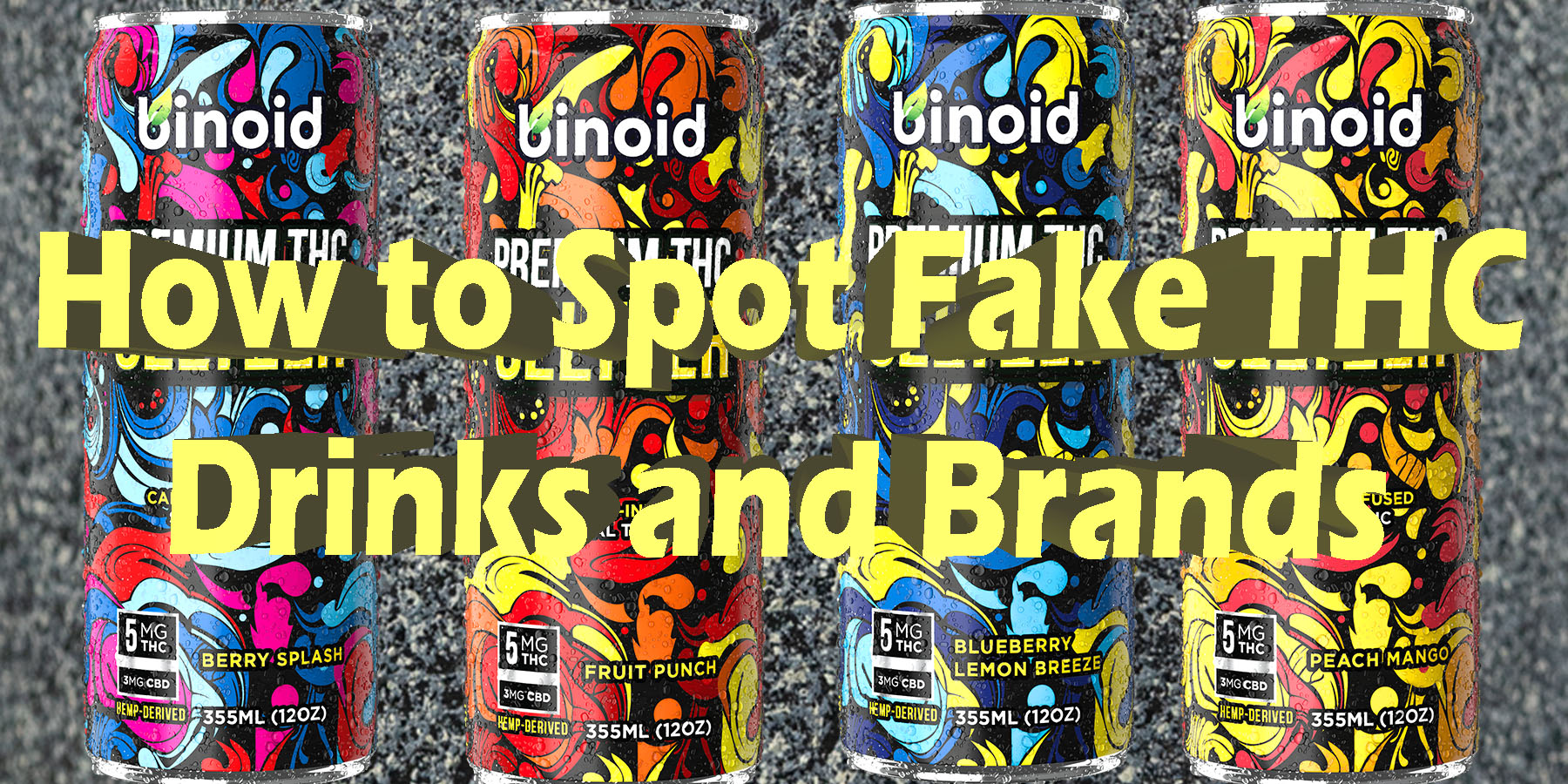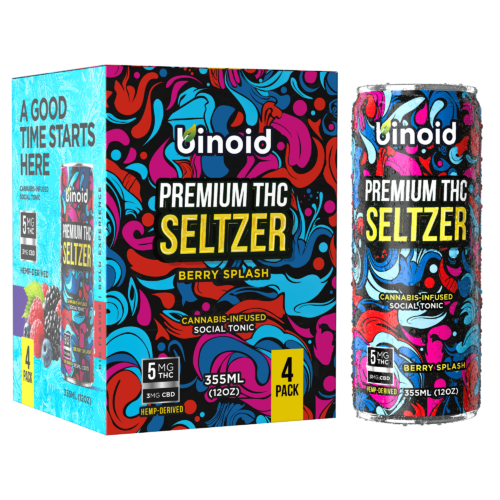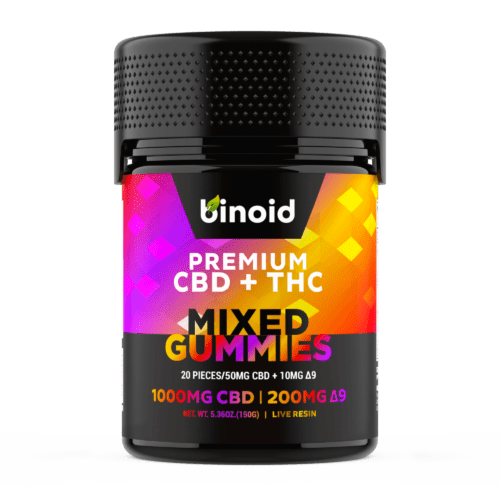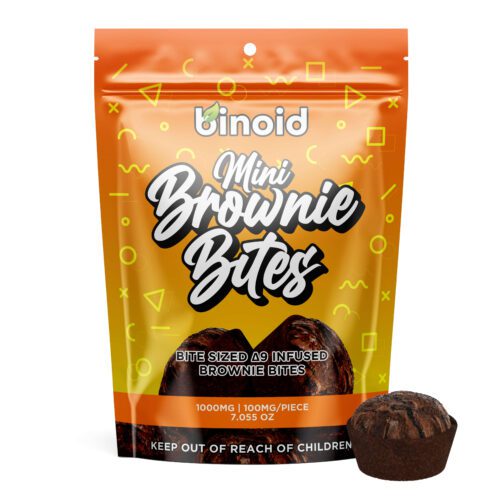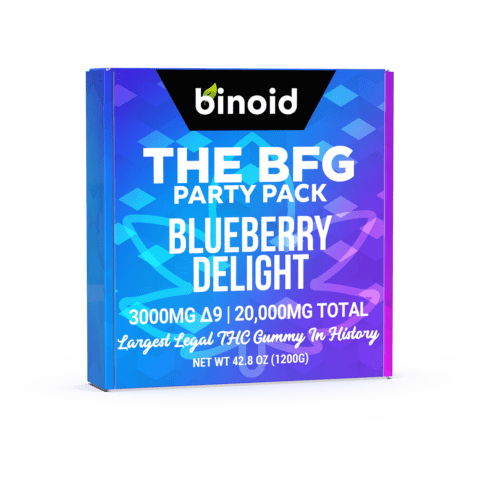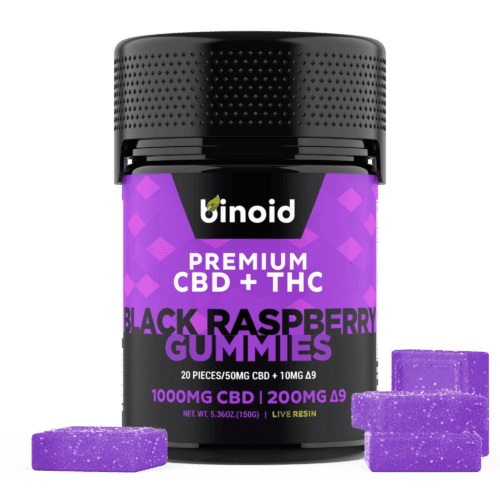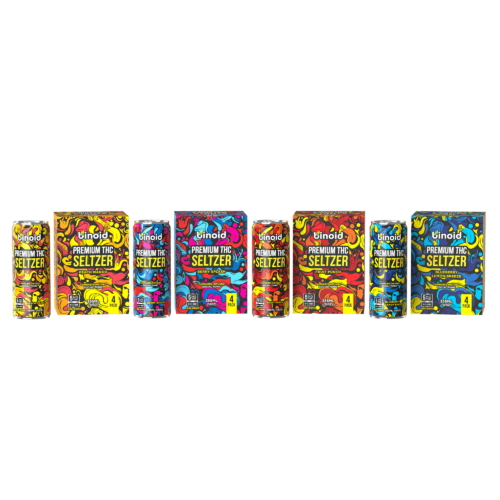The vibrant, ever-expanding universe of cannabis beverages is a thrilling frontier, sparkling with innovation and creativity. Coolers in licensed dispensaries are now lined with a kaleidoscope of sleek cans and elegant bottles, each promising a unique journey toward bliss and relaxation. This exciting wave has transformed cannabis consumption, elevating it into a sophisticated, social, and precisely controlled experience.
Yet, as with any gold rush, the rapid rise in popularity has attracted not only pioneering artisans but also opportunistic imitators. Lurking in the shadows of this bright and bubbly market are the imposters: the fakes, the counterfeits, and the simply low-quality concoctions that can turn an anticipated evening of euphoria into a deeply disappointing affair. Navigating this new landscape requires a discerning eye and a bit of insider knowledge, ensuring that every sip you take is from a source you can trust.
To Buy THC Drinks Click Here
Recommended products
THC Drinks 101
Before uncovering fakes and low quality THC drinks, we must provide some key insights into the beverages themselves. At its core, a THC drink is a ready-to-consume beverage that has been infused with a precise, measured dose of Tetrahydrocannabinol (THC) – the most well-known compound in the cannabis plant and is primarily responsible for the feelings of bliss and the shift in perception many people associate with its use. These drinks are crafted to be approachable and convenient, presenting the effects of cannabis in a familiar format. The true innovation lies in the science that allows the naturally oil-based THC to blend perfectly with water-based liquids, creating a consistent, shelf-stable, and enjoyable product. Not to mention, a discreet and straightforward way to partake.
The current market for THC drinks is a vibrant landscape of diverse options, with each category defined by its base ingredients, production methods, and typical flavor profile. The creation of these beverages hinges on the science of emulsification, a process that takes a refined cannabis extract and makes it completely dispersible in liquid, opening up a world of culinary possibilities for producers and consumers alike. Hence, the types of THC drinks you’ll encounter are:
THC Seltzers: This category is defined by its simplicity and minimalist ingredient profile, appealing to health-conscious consumers. The foundation of a THC seltzer is purified, carbonated water. The production process involves infusing this water with a nano-emulsified THC distillate, which ensures a clear appearance and rapid mixing. The subtle taste is derived not from sugar, but from natural fruit essences or extracts, like lime, grapefruit, or raspberry. They are almost universally packaged in slim 12-ounce aluminum cans, a choice that is both recyclable and effective at protecting the cannabinoids from light, which can cause degradation over time.
THC Sodas: These beverages are designed to replicate the indulgent and sweet experience of traditional carbonated soft drinks. The manufacturing process begins with a syrup base composed of water, a significant amount of a sweetener, and a proprietary flavor blend, such as cola or root beer. A pre-measured dose of THC extract is then infused into this base before it is carbonated and packaged. Given their composition, consumers should pay close attention to the type of sweetener used, as it is a defining ingredient. Packaging often uses retro-style branding on standard aluminum cans or classic glass bottles to evoke a sense of nostalgia.
THC Waters: THC-infused waters are crafted for the purist, with a focus on clean hydration and a straightforward delivery of THC. Their ingredient list is typically the shortest of any category, consisting of just purified, distilled, or mineral-rich spring water and a tasteless, colorless, water-soluble THC isolate or distillate. Most varieties contain no sugar, calories, or additional flavors, although some may feature a very delicate hint of a natural fruit essence. The packaging is often designed to look clean and minimalist, utilizing clear or lightly tinted PET plastic bottles or sleek glass bottles, much like premium bottled waters.
THC Lemonade: This is a classic non-carbonated beverage created from a base of lemon juice, water, and a sweetening agent. The production involves creating large batches of lemonade, where the balance of tartness and sweetness is carefully controlled. A THC emulsion is then blended into the batch to ensure even distribution of the active ingredient. The type of sweetener used is a key variable in these drinks, ranging from traditional sugar to natural alternatives. THC lemonades are packaged in various formats, including single-serving cans and glass bottles, as well as larger, multi-serving resealable jugs.
THC Tea: This category includes both ready-to-drink (RTD) iced teas and traditional tea bags for home brewing. For RTD versions, large quantities of black, green, or herbal tea are brewed using real tea leaves, which are then cooled and often sweetened. A THC extract is then emulsified and mixed into the tea before packaging in bottles or cans. For infusible tea bags, a powdered, water-soluble THC is precisely mixed with the dry tea leaves and other herbs before being portioned into individual bags and packaged in a standard cardboard tea box. The ingredients often include the tea itself, a sweetener, and sometimes citric acid for preservation.
THC Coffee: There are two primary production methods for THC coffee. The first involves infusing whole roasted coffee beans with a THC distillate oil; the porous beans absorb the oil, and the THC is extracted during the home-brewing process. The second method, used for ready-to-drink products, involves brewing a large batch of coffee as a cold brew, into which a liquid THC emulsion is blended before it is canned or bottled. Besides coffee and THC, these drinks may contain milk, sugar, or other flavorings, making the full ingredient list important to review. Packaging includes airtight bags for coffee beans or cans and bottles for cold brew.
THC Cocktails: These are sophisticated, non-alcoholic beverages designed to mimic the complex taste profiles of traditional cocktails. Their creation is an exercise in mixology, involving the careful layering of flavors from natural fruit juices, botanical extracts, bitters, and spices to replicate drinks like a margarita or a Moscow mule. A THC emulsion is then infused into this complex, non-alcoholic base. The ingredient list can be long, reflecting the complexity of the flavor profile, and often includes various natural and sometimes artificial flavorings. Packaging is typically in smaller, single-serving cans or decorative glass bottles to reflect their premium positioning.
THC-infused Wines and Beers: The creation of these non-alcoholic products is a highly technical process. It begins with the full production of a traditional wine or beer. This is followed by a dealcoholization step, where the alcohol is gently removed using methods like vacuum distillation or reverse osmosis, aiming to preserve the original flavor. Finally, a precise dose of a water-soluble THC emulsion is infused into this non-alcoholic base. The ingredient list will be similar to that of their alcoholic counterparts, minus the alcohol. Packaging is designed to be almost identical to standard beer cans, beer bottles, or wine bottles.
The general effects of a THC drink are largely defined by their onset and duration, which can differ notably from other methods of consumption. Thanks to the use of Nanoemulsion technology in many beverages, the THC can be absorbed by the body much more quickly than from a traditional edible. This can lead to an onset of effects in as little as 10 to 20 minutes. This rapid feedback is a crucial feature, as it allows a user to better assess the effects in real-time and manage their experience. The duration of the effects is also often shorter than that of edibles, making for a more manageable journey that doesn’t necessarily consume an entire day, a characteristic that appeals to many users.
The audience for THC drinks is remarkably diverse and continues to grow as the perception of cannabis evolves. A major segment of this audience includes individuals seeking alternatives to alcohol. They are drawn to the ability to participate in social rituals with a beverage that provides a pleasant buzz, but without the well-known downsides of alcohol. Another significant group is composed of wellness-minded consumers who value the smoke-free nature of the product and actively seek out options that are low in sugar and calories and made with all-natural ingredients. This also includes “canna-curious” newcomers, who find the familiar and controlled format of a beverage to be a much more approachable entry point into the world of cannabis than other, more traditional methods.
Recommended products
Why THC Drink Quality Matters in the First Place
Now, before we become beverage detectives, it’s crucial to understand the two main types of problematic products we’re looking for. While often lumped together, they represent different levels of risk and deception that can profoundly impact your overall experience.
A “fake” or “counterfeit” THC drink is a product operating entirely outside the legal, regulated system. These are the illicit offerings often found in unlicensed smoke shops, gas stations, or through dubious online sellers who operate in legal grey areas. They are notorious for mimicking popular snack or candy brands, using copyrighted cartoon characters, and making outlandish dosage claims to lure in unsuspecting buyers.
The danger here is significant and multifaceted. Because they are completely unregulated, there is no way to know what is actually in the can. The dosage could be wildly inaccurate—containing virtually no THC or a dangerously high amount. Worse, the product could be a cocktail of harmful contaminants like pesticides, heavy metals, mold, or residual solvents left over from a crude, unsafe extraction process. These are the products to avoid at all costs, as they pose a genuine risk.
A “low-quality” THC drink, on the other hand, might be a legal product sold in a licensed dispensary, but it simply fails to meet the standards of a premium beverage. It’s not necessarily dangerous in the same way a counterfeit product is, but it is deeply disappointing and a waste of money. These drinks are often made with cheaper ingredients, inferior cannabis extracts, and poor manufacturing techniques. This can result in an unpleasant taste, an oily texture that coats your mouth, sediment collecting at the bottom of the can, or highly inconsistent effects from one can to the next. While it likely won’t put you in harm’s way, it will certainly leave you with a lackluster experience, a far cry from the chilled-out state of bliss you were seeking and paid for.
So, Why Do Fake or Low-Quality THC Drinks Even Exist Then?
To effectively spot a problematic product, it helps to understand the motivations behind its creation. The existence of fake and low-quality THC drinks isn’t accidental; it’s a calculated result of several powerful economic and market forces. These products proliferate because there are distinct, lucrative advantages for unscrupulous operators who are willing to cut corners and deceive consumers. The reasons range from pure profit-seeking to exploiting gaps in consumer knowledge and regulatory enforcement.
The Overwhelming Power of Profit Margin
The single greatest driver behind the creation of fake and low-quality cannabis products is the pursuit of maximum profit. Every step in creating a legitimate, high-quality, and safe THC beverage costs a significant amount of money. By sidestepping these costs, bad actors can drastically increase their profit margins. Let’s take that a step further here:
Inferior Ingredients: This is the most obvious corner to cut. Instead of using high-quality, purified cannabis distillate or a stable nanoemulsion, a low-quality producer will use crude, poorly filtered extract. This unrefined input is the cheapest form of cannabis oil but comes loaded with undesirable plant matter like chlorophyll, fats, and lipids, resulting in a harsh, bitter, and overwhelmingly “weedy” taste. To mask this, they then use excessive amounts of artificial sweeteners, flavorings, and acidulants, which are far cheaper than sourcing natural fruit juices and developing balanced, premium flavor profiles.
Bypassing a Testing Regimen: This is a massive cost-saving measure for illicit producers. A full panel of compliance testing from a reputable, accredited lab can cost anywhere from $350 to over $800 per batch. This includes tests for potency, pesticides, heavy metals, residual solvents, and microbials. A legitimate company producing dozens or hundreds of batches a year spends tens or even hundreds of thousands of dollars on testing alone to guarantee safety and consistency. Fake producers skip this entirely, pocketing the savings while passing all the risk on to the consumer.
Dodging Regulatory and Tax Burdens: The legal cannabis industry is one of the most heavily taxed and regulated in the world. Businesses must pay for expensive licenses, high state and local excise taxes, and the significant overhead that comes with adhering to strict manufacturing compliance rules (often called cGMP, or Current Good Manufacturing Practices). An illicit operator exists entirely outside of this system. They pay no cannabis taxes, no licensing fees, and invest nothing in compliance, giving them an enormous, unfair financial advantage and allowing them to undercut the prices of legal, safe products.
Recommended products
Exploiting High Demand and an Information Gap
The cannabis beverage market is exploding in popularity, with new and curious consumers entering every day. This enthusiasm creates a fertile ground for exploitation by those looking to make a quick buck, such as:
Preying on the Uninformed: A first-time buyer may not know what a Certificate of Analysis (CoA) is, why a QR code is important, or that a can with a famous cartoon character on it is an immediate red flag for an illegal product. Deceptive producers bank on this information gap. They create flashy, appealing packaging that mimics popular, trusted brands to create a false sense of legitimacy, knowing that an inexperienced consumer is more likely to be swayed by a familiar-looking design than by a discreet batch number.
The Race to the Bottom on Price: While discerning consumers seek quality, a segment of the market is purely price-driven. Low-quality producers cater directly to this demographic. By using cheap ingredients and avoiding all regulatory costs, they can offer a product that is a few dollars cheaper on the shelf. This tempts budget-conscious buyers who may not realize that the lower price comes at the cost of quality, consistency, and, in the case of fakes, their own safety.
Technical Skill and Equipment Gaps
Sometimes, a low-quality product isn’t born from malicious intent but from a simple lack of expertise. This is particularly true in the complex world of cannabis beverages, where food science meets cannabis science. Specifically, creating a truly stable, tasteless, and effective Nanoemulsion—the technology that makes cannabinoids water-soluble and allows for rapid onset—is incredibly difficult. It requires deep knowledge of food science, expensive high-shear homogenization equipment, and significant investment in research and development. A newer or less-capitalized company might rush a product to market using inferior emulsion techniques. The result is a legal but low-quality drink that suffers from an oily texture, a bitter taste, and separation of the cannabis oil over time, leading to inconsistent dosing from sip to sip.
The Anatomy of a Label: Your First Line of Defense
The single most powerful tool you have in your quest for quality is the product’s packaging and label. Reputable companies who invest in creating a high-quality THC drink product are proud of it and want you to know exactly what you’re consuming. Shady operators, conversely, rely on flashy gimmicks or sparse information to hide their shortcomings. A legitimate label is a transparent window into the product’s soul, and learning to read it is your most essential skill.
The Unmistakable QR Code
In the modern, regulated cannabis market, the undisputed gold standard for transparency is a QR code that links directly to a Certificate of Analysis (CoA). A CoA is a lab report from an accredited, third-party testing facility that details the product’s chemical makeup. If a THC drink does not have a scannable QR code that leads to a legitimate, batch-specific lab report, you should treat it with extreme suspicion. This simple square is the brand’s commitment to accountability.
Recommended products
How to Read a Certificate of Analysis (CoA) Like a Pro
Scanning the QR code is step one; understanding the report it leads to is step two. A CoA can look intimidating, filled with scientific terms and numbers, but it’s quite straightforward once you know what to look for, such as:
Header Information: At the top, verify that the product name and, most importantly, the Batch Number or Lot Number on the report exactly match what’s printed on the can or bottle you are holding. Some counterfeiters might link to a real CoA, but for a different product or an old batch.
Cannabinoid Potency: This is the main event. This section will list all the cannabinoids tested for and their concentration, usually in milligrams per gram (mg/g) or milligrams per milliliter (mg/mL). Confirm that the THC level matches what’s advertised on the label within a reasonable margin of variance (typically +/- 10-15%). If the label says 5mg THC, the CoA should reflect that. This section will also show you the levels of other beneficial cannabinoids like CBD, CBG, or CBN, giving you a fuller picture of the experience you can expect.
Pesticides: Cannabis is a bio-accumulator, meaning it can absorb chemicals from its environment. This section is critical for safety. It should list dozens of specific pesticides and show a result next to each one. You are looking for a clear “Pass” rating, or values listed as “ND” (None Detected).
Heavy Metals: Like pesticides, cannabis plants can pull heavy metals like lead, mercury, arsenic, and cadmium from the soil or water. The CoA must show a “Pass” for this section, indicating levels are below the safe threshold for consumption.
Microbial Contaminants: This test screens for harmful microorganisms like Aspergillus (a type of mold), Salmonella, and E. coli. A “Pass” in this category is non-negotiable and ensures the product is free from bacteria and mold that could make you sick.
Residual Solvents: This is most relevant for THC drink products made with solvent-based extraction methods. The test ensures that any chemicals used in the process, like ethanol or butane, have been safely purged from the final product. Again, look for a “Pass” or “ND” result.
Mycotoxins: These are toxic compounds produced by certain types of mold. A comprehensive CoA will include a test for mycotoxins to offer an even higher level of safety assurance.
Visual Red Flags: Exposing Fakes Through Design Flaws
Before you even get to a QR code, you can often spot a fake by its packaging alone. Illicit market products frequently have tell-tale signs of their fraudulent nature, such as:
Copyright Infringement: This is the biggest and most obvious giveaway. If the drink’s packaging uses logos, fonts, characters, or branding from famous candy, soda, or snack companies (e.g., “Stoney Patch,” “Cannaburst,” or THC versions of “Skittles” or “Nerds”), it is an illegal and unregulated product. Period. Licensed, legal companies invest heavily in creating their own unique branding and would never risk the massive legal liability of copyright infringement.
Outlandish Dosage Claims: The legal, regulated market has a functional understanding of dosage, with most single-serving drinks containing between 2.5mg and 10mg of THC, and some high-dose options reaching 25-100mg for experienced users. If you see a single-serving can or bottle claiming to have 500mg, 1000mg, or more, it is almost certainly a fake product with a wildly inaccurate and potentially dangerous dose. These numbers are purely for marketing shock value.
Poor Quality and Typos: A legitimate company invests tens of thousands of dollars in its brand. They are not going to ruin it with amateurish mistakes. Scrutinize the label for spelling errors, strange grammar, low-resolution images, blurry text, or colors that look faded or misaligned. These are all hallmarks of a cheap, rushed printing job from an unprofessional operation.
Recommended products
The Company You Keep: Vetting the Brand Behind the Beverage
In today’s market, a brand’s reputation is everything. Fly-by-night operators can create flashy packaging, but they can’t fake a history of quality and customer trust. A little bit of online reconnaissance before you buy can save you from a great deal of disappointment.
The Digital Footprint
Start with a simple Google search. A trustworthy brand will have a professional and comprehensive online presence. This includes a well-designed website with clear information about their products, their company mission, their manufacturing process, and easily accessible contact information. Their social media channels (like Instagram or LinkedIn) should be active, engaging, and professional, showcasing their products in a way that aligns with legal marketing guidelines (i.e., not targeting children or making health claims). If a brand has no website, broken links, or a barely-there social media presence, it suggests they aren’t a serious, long-term player.
Voices of the Community
Don’t just take the company’s word for it; seek out independent reviews. While testimonials on a brand’s own website can be curated, forums like Reddit offer a trove of unfiltered opinions from real users. Subreddits like r/Edibles, r/Treegummies, or state-specific cannabis forums are excellent places to search for a brand’s name. See what the community is saying about the taste, the consistency of the effects, and the overall quality. Furthermore, your local budtender at a licensed dispensary is an invaluable resource. They see and hear feedback on hundreds of products all day long and can often guide you toward brands that are known for their quality and away from those with a poor reputation.
The Critical Importance of the Source
This point cannot be overstated: Only purchase THC products from a state-licensed, legal dispensary or delivery service. These establishments are the final gatekeepers of the legal market. They are required by law to verify the products they sell, ensuring they come from licensed producers and have passed all state-mandated testing. If you are buying THC drinks from a gas station, a corner store, an unlicensed “gift shop,” or a random seller on a social media app, you are purchasing from the illicit market. In that context, all bets are off, and none of the quality markers discussed here can be trusted.
A Connoisseur’s Guide: Spotting Quality Issues in Different Drink Types
The world of THC beverages is wonderfully diverse. However, the signs of low quality can manifest differently depending on the type of drink. Here’s how to be a discerning connoisseur for each category.
THC Seltzers
Different signs of quality can be manifested in THC seltzers due to variations in ingredient purity, cannabinoid extraction methods, and the stability of the emulsion, all of which impact flavor, potency, and shelf-life. Furthermore, the quality of packaging and the precision of dosing also contribute to the overall consumer experience and perceived product excellence.
High-Quality: A premium THC seltzer should be crisp, light, and highly refreshing. The carbonation should be lively and persistent, much like a craft sparkling water. Any flavoring, be it grapefruit, lime, or berry, should taste authentic and clean, not artificial or cloying. Most importantly, thanks to superior nanoemulsion technology, there should be virtually no cannabis aftertaste or oily texture. The experience should be clean from start to finish.
Low-Quality: A subpar seltzer will often have a syrupy, artificial sweetness used to mask the taste of a crude extract. The carbonation might be weak, causing the drink to go flat just minutes after opening. You might also notice a distinct bitter, “plant-y” aftertaste or even a slight, unpleasant film that coats your tongue, which is a dead giveaway of an unstable or poor-quality cannabis emulsion.
THC Sodas
Different signs of quality can be manifested in THC sodas due to variations in the purity of ingredients, the efficacy of the cannabinoid emulsification process, and the stability of the infusion over time. These factors collectively influence the soda’s flavor profile, the consistency of its THC dosage, and its overall shelf stability.
High-Quality: A well-made THC soda offers a satisfying, nostalgic experience with a balanced and complex flavor profile. The sweetness should complement the core flavor (like a classic cola, spicy root beer, or sharp ginger ale) without being overpowering. The integration of the cannabis extract should be seamless, leaving little to no distracting cannabis taste and providing a smooth mouthfeel.
Low-Quality: The most common flaw in cheap THC sodas is an excessive, saccharine sweetness that serves as a heavy-handed attempt to cover up the off-flavors of a poor-quality extract. You might also encounter a strange, lingering chemical aftertaste that is entirely different from the intended flavor. Inconsistent or weak carbonation is another sign of a low-budget production.
Recommended products
THC Waters
Different signs of quality can be manifested in THC waters based on the effectiveness of nano-emulsification for consistent THC distribution and rapid absorption, as well as the purity of the water itself. Additionally, the clarity, stability, and absence of off-flavors from the cannabis extract or other additives are crucial indicators of a high-quality product.
High-Quality: This category is all about purity and simplicity. A quality unflavored THC water should be completely clear, with no exceptions. It should be truly neutral, with no discernible taste or smell. It should be perfectly homogenous, with no visible particles, cloudiness, or separation, even after sitting for a while. It should look and feel exactly like premium bottled water, with the THC being an invisible passenger.
Low-Quality: Be immediately wary of any THC water that is cloudy, hazy, or has visible floating particles when it’s supposed to be clear. An obvious red flag is an oily sheen or small oil droplets on the surface of the water, indicating the emulsion has broken and the oil has separated. A “weedy” or grassy taste is another sure sign of a low-grade, poorly filtered cannabis input that has tainted the final product.
THC Lemonades and Teas
Different signs of quality can be manifested in THC lemonades and teas due to factors like the stability of the THC emulsion in acidic environments, the purity and sourcing of the base tea leaves or lemon juice, and the effectiveness of flavor masking. Additionally, consistent dosing, absence of sediment or separation, and a natural, balanced taste free from cannabis bitterness are key indicators of a well-formulated product.
High-Quality: A top-tier THC lemonade should have the bright, tart, and sweet balance of real, fresh-squeezed lemonade. Similarly, a quality THC tea should taste authentically brewed, with the distinct character of the tea leaves (be it a robust black, a grassy green, or a floral herbal) coming through clearly. The ingredients should taste natural and well-balanced.
Low-Quality: Low-grade versions of these classics often taste like they came from a cheap, sugary powder mix. Telltale signs include a gritty or powdery texture, an artificial, almost neon color that doesn’t look natural, and a harsh, chemical flavor that bears little resemblance to real lemons or brewed tea.
THC Coffee
Different signs of quality can be manifested in THC coffee based on the method of THC infusion, such as the consistency and stability of emulsified oils or tinctures within the coffee, which directly impact taste and predictable dosing. Furthermore, the inherent quality of the coffee beans themselves, including their roast and origin, and the absence of any undesirable cannabis-related flavors, significantly contribute to the overall product experience.
High-Quality: The goal here is a harmonious marriage of caffeine and cannabis. A premium THC coffee, whether a canned cold brew or a pod, should first and foremost taste like good coffee. The coffee beans should be of high quality, and the brew should be smooth and rich. The cannabis effects should be integrated cleanly, complementing the alertness from the caffeine for a focused, euphoric feeling without any distracting flavors or textures.
Low-Quality: A poorly made THC coffee is an unpleasant experience from the first sip. The most common issue is a noticeable oily mouthfeel or visible oil slicks on the coffee’s surface. The bitter, earthy notes of a crude cannabis extract can clash horribly with the natural bitterness of the coffee, creating a doubly potent and unpalatable taste that can ruin the entire experience.
Recommended products
THC Cocktails and Mocktails
Different signs of quality can be manifested in THC cocktails and mocktails due to the intricate balance required for stable THC infusion in complex liquid matrices, which impacts homogeneity and prevents separation. Additionally, the quality of the non-THC ingredients, such as fresh juices, premium mixers, and natural flavors, plays a crucial role in the overall taste, aroma, and consumer experience, distinguishing a superior product from a mediocre one.
High-Quality: These sophisticated beverages aim to replicate the complexity and enjoyment of a craft cocktail, sans alcohol. A quality THC mocktail will have layered flavors from high-quality ingredients like real fruit juices, aromatic bitters, and botanical extracts. The taste should be nuanced, balanced, and evolve on the palate, just like a cocktail mixed by a skilled bartender.
Low-Quality: Cheap imitations will often taste one-dimensional and overwhelmingly syrupy, like a low-grade convenience store cocktail mixer. They lack the complexity and refinement of their high-quality counterparts, delivering a singular blast of sugar and artificial fruit flavor rather than a sophisticated flavor journey.
THC-Infused Wines (Dealcoholized)
Different signs of quality can be manifested in THC-infused dealcoholized wines based on how effectively the dealcoholization process preserves the original wine’s complex aromas and flavors, which can often be stripped away. Furthermore, the stability and seamless integration of the THC Nanoemulsion are crucial, ensuring consistent dosing without undesirable separation or a noticeable cannabis aftertaste that detracts from the wine experience.
High-Quality: Creating a good dealcoholized, cannabis-infused wine is a true art. The best examples manage to retain some of the original character of the grape varietal—like the crisp acidity of a Sauvignon Blanc or the jammy notes of a Zinfandel—while seamlessly integrating the cannabis for a relaxing, blissful effect. It should feel like a thoughtful alternative to traditional wine.
Low-Quality: Poorly made versions often lose all their wine-like character in the dealcoholization and infusion processes, ending up tasting like little more than sugary, slightly bitter grape juice. If it doesn’t remind you of wine in any way, it’s a low-quality product.
THC-Infused Beers (Dealcoholized)
Different signs of quality can be manifested in THC-infused dealcoholized beers due to the inherent challenges of creating a flavorful non-alcoholic base that closely mimics traditional beer’s body and aroma, which often suffer during dealcoholization. Furthermore, the successful integration of THC without introducing off-flavors or affecting foam stability, while ensuring consistent and precise dosing, is a critical indicator of a high-quality product.
High-Quality: Similar to infused wine, quality here depends on preserving the essence of the original beverage. A good THC-infused beer will maintain some of the malt body, hop aroma, and characteristic bitterness or sweetness you’d expect from a craft beer, with a clean finish that makes you want another sip.
Low-Quality: A common flaw in this category is a thin, watery body that lacks any real beer character. Another tell-tale sign is a “worty” taste—the overly sweet, unfermented grain flavor that indicates a poor brewing process. Any strange metallic tang is also an immediate red flag for a production process gone wrong.
Your Vote of Confidence
Becoming a discerning consumer of THC beverages does more than just protect you from a disappointing experience; it elevates the entire industry. Every time you choose a product based on its transparent labeling, its verifiable lab results, and its positive community reputation, you cast a vote for quality. This sends a powerful message to the market, rewarding the dedicated artisans who pour their passion and resources into creating exceptional products. It pushes the unscrupulous or lazy operators out of the picture. Your informed choice is the engine of progress, ensuring the future of cannabis beverages is not only blissful and relaxing but also safe, reliable, and consistently magnificent.

